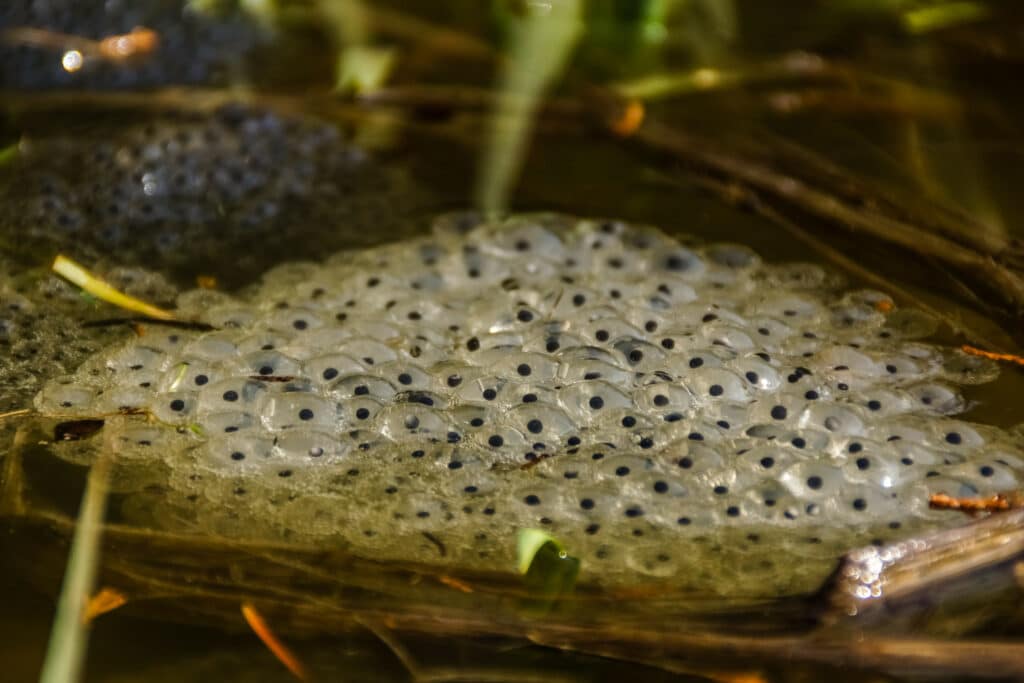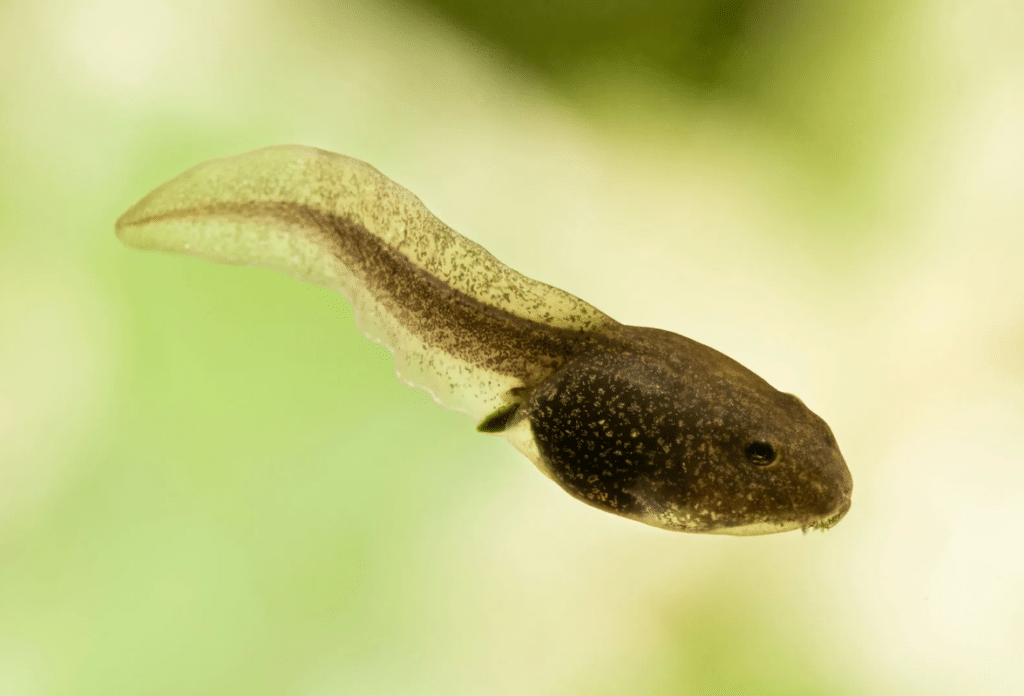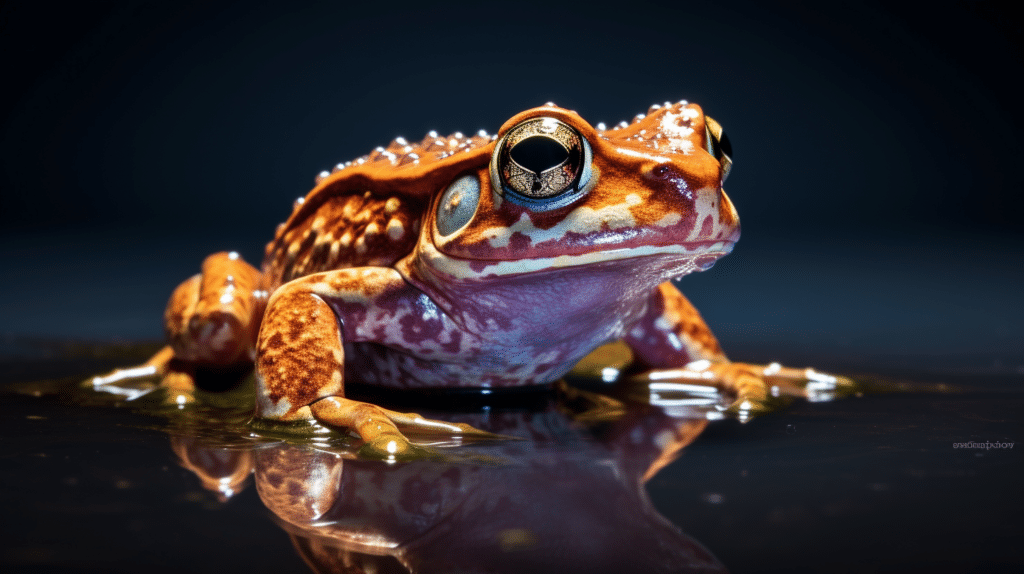The life cycle of a frog is a captivating and intricate process that showcases the wonders of nature’s ability to transform. From the tiny, gelatinous egg to the hopping, fully-developed froglet, this journey is filled with fascinating stages of growth and metamorphosis. In this comprehensive article, we will delve into the remarkable metamorphosis of a frog, exploring each phase of its life cycle in intricate detail.
Eggs – The Beginning of Life
The life of a frog begins in water, where it lays its eggs in carefully selected locations to ensure the survival of its offspring. These eggs are typically laid in clusters, known as frogspawn, and are attached to aquatic plants or floating debris to provide protection from predators and the elements. Within the protective jelly, the eggs develop over a period of days, depending on environmental factors such as temperature and humidity.
Each clutch of eggs can contain hundreds or even thousands of individual eggs, increasing the chances of some surviving to adulthood. The parent frogs exhibit remarkable parental care by guarding the eggs and tadpoles from potential threats, ensuring the best possible start to their offspring’s life.

Tadpole – The Aquatic Larva
Once the eggs hatch, they give birth to tadpoles, the aquatic larval stage of the frog’s life cycle. Tadpoles are peculiar in appearance, resembling small fish with elongated, translucent bodies and external gills for breathing underwater. These gills facilitate the exchange of oxygen, enabling the tadpole to survive and grow in its aquatic environment.
During this stage, tadpoles are entirely herbivorous, feeding on algae and plant matter found in their watery habitats. They propel themselves through the water using their muscular tails and exhibit distinct schooling behaviour, forming groups for safety and social interaction.

Metamorphosis – The Transformation Begins
As tadpoles grow, they enter a crucial phase known as metamorphosis. This process is a marvel of natural engineering, where tadpoles undergo a series of dramatic changes to become adult frogs. Metamorphosis is driven by a complex interplay of hormonal changes, triggered by environmental cues like temperature, water quality, and food availability.
The first visible sign of transformation is the development of hind legs, which emerge as small buds behind the tadpole’s tail. Over time, the hind legs elongate and develop into fully formed limbs. Subsequently, the front legs begin to emerge, and the tadpole’s body shape starts to change.

Development of Lungs
With the development of limbs, the tadpole’s transition from an aquatic life to a terrestrial one begins. Lungs start to form as internal gills begin to degenerate. This adaptation prepares the tadpole for a life outside water, where it will soon breathe atmospheric air.
As the tadpole starts to explore its surroundings beyond the water, it must strike a delicate balance between respiration through gills and the gradual use of newly developed lungs. During this time, the tadpole may exhibit a mix of breathing methods, allowing it to adapt to different oxygen-rich environments.
Absorption of Tail
As the tadpole continues to grow and adjust to its changing body, its tail, once a vital tool for swimming, starts to shrink. The tail’s tissues are gradually absorbed into the body, providing essential nutrients to fuel the metamorphosis process. This tail absorption eventually leads to the disappearance of the tadpole’s tail, symbolising its successful transition to adulthood.
Skin Changes
Throughout the metamorphosis, the tadpole’s skin undergoes significant changes. It becomes thicker and more robust, with special glands developing that secrete mucus to keep the skin moist on land. This adaptation is crucial for the frog to survive in a terrestrial environment, as it helps protect against dehydration and supports the frog’s ability to breathe through its skin.
The skin of the frog also plays a vital role in thermoregulation, allowing it to regulate its body temperature effectively. The colour and texture of the skin can change to match the environment, providing camouflage and protection from predators.
Vision and Hearing Adaptations
As the transformation progresses, the frog’s eyes and ears undergo changes to accommodate its new life on land. Its vision improves, adapting to the changing light conditions outside the water, while its hearing also becomes more sensitive to sounds in its surroundings.
Frogs have large, protruding eyes that allow for excellent binocular vision, enabling them to accurately judge distances and accurately target prey. Their eyes are also adapted to see in low light conditions, making them effective hunters during dusk and nighttime.
The development of the frog’s ears is equally fascinating. Unlike humans, frogs lack external ears, but they possess an eardrum or tympanum on each side of their head, just behind the eyes. These eardrums are covered and protected by a thin layer of skin. Through the vibrations sensed by their eardrums, frogs can detect a wide range of sounds and communicate with other frogs for mating purposes.
Diet Transition
With the completion of metamorphosis, the young froglet now resembles a miniature version of an adult frog. It’s time for another significant change: the transition in diet. Froglets’ diet consists of insects, small invertebrates, and sometimes even other smaller frogs. They use their long, sticky tongues to catch prey with precision.
Froglets are skilled hunters, using their impressive vision and accurate tongue projection to capture fast-moving insects with exceptional speed and accuracy. The transition to a carnivorous diet is essential for the frog’s growth and development into a healthy adult.
Habitat Transition
The mature froglet leaves the water to explore the surrounding terrestrial environment. They find shelter in damp areas, such as marshes, ponds, or forests, where they can stay close to water sources but also find insects and other food.
During this phase, the froglet faces new challenges in adapting to terrestrial life. It must navigate potential predators, find suitable food sources, and establish territories to attract potential mates.
Adult Frog – The Final Stage
As the froglet continues to grow, it eventually reaches adulthood. At this stage, the frog has fully adapted to its life on land. The adult frog is equipped with strong limbs for hopping, excellent vision for spotting prey, and a unique vocal sac that enables it to produce a wide range of sounds for communication and mating.
Adult frogs come in various shapes and sizes, depending on their species. Some have smooth, shiny skin, while others may have rough or warty textures to aid in camouflage. They are exceptional jumpers, capable of leaping significant distances to escape predators or catch prey.
The vocal sac, present in many male frogs, is an inflatable pouch situated beneath the throat. By filling and deflating this sac, frogs can produce a diverse array of calls, used primarily for attracting mates during the breeding season. Each frog species has a unique call, allowing females to identify suitable mates amidst the chorus of competing calls.

Conclusion
The life cycle of a frog, from tadpole to froglet, is a remarkable testament to nature’s adaptability and resilience. The journey from a small, aquatic larva to a fully developed adult frog showcases the wonders of metamorphosis and the intricacies of the natural world. As these amphibians undergo various physical and behavioural changes, they find their place in both aquatic and terrestrial ecosystems, playing crucial roles in maintaining the delicate balance of nature.
Observing and understanding this incredible life cycle reminds us of the beauty and complexity of the natural world around us. It serves as a poignant reminder of the importance of preserving and protecting these habitats, ensuring the continued existence of these fascinating creatures for generations to come. The life cycle of a frog is not only a captivating story of transformation but also a testament to the marvels of evolution and the interconnectedness of all living beings on Earth.
Sam loves to learn about animals and their habitats. He has been a nature lover from a very young age, and has been writing papers and articles about wildlife for as long as he can remember.
